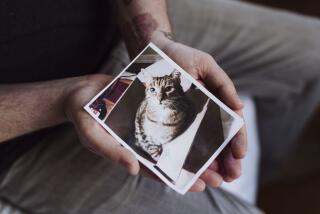How to know when it’s time to say goodbye to an animal companion?
We had to put Felix to sleep last month. I say “had to put him to sleep” because I can’t bear the thought there might have been an alternative.
I had two other dogs who lived to be 21 before dying at home. Toward the end, several people had suggested I look into euthanasia, but the dogs mercifully died before I had to. I believe animals shouldn’t have to suffer because I can’t pull the trigger.
But I don’t get how to tell when their time is up. Families once put pets to sleep if dad got a job transfer; now, the standards seem all over the map.
Days after Felix’s death, an article appeared in the New York Times arguing that death too often is used to end animal suffering when “much less aggressive possibilities exist.” The article, by bioethicist Jessica Pierce, discussed hospice care for dying animals, which I didn’t know existed.
It also detailed a quality-of-life scale, Alice Villalobos’ “Pawspice” program, for assessing how badly a pet is failing. The test rates, on a 1-10 scale, how animals are faring in areas including appetite, hygiene, mobility and hydration.
I looked up the Pawspice scale and was relieved to find that we seemed to have used similar criteria to evaluate Felix, although it would have been nice to have an objective grid.
Felix was already 17 when I took him in after his owner was foreclosed on. In quick succession, he lost sight in one eye, then the other.
A year later, he quit wanting to walk. He urinated and defecated with difficulty, but also lost control of his bodily functions with increasing frequency. He didn’t seem to be able to absorb his food (even after we changed it), was not drinking water, panted excessively and began whimpering while lying on his pillow.
But what really forced our hand was that there was nobody to take care of Felix while I was at work or otherwise occupied. A series of catastrophic accidents in my house tipped the balance. If there was some kind of animal hospice where he could have been taken to live out his final days, maybe things could have been different.
I called Kathryn Marrochino, a college professor who started a nonprofit group in Vallejo to promote hospice care for dying animals. The first thing I learned was that animal hospice by and large is not a place. It’s a form of treatment provided by a vet or vet techs in your home. Just as in human hospice, the goal is palliative care, especially pain management.
Marrochino said hospice is often a cheaper alternative to chemotherapy and other invasive procedures that pet owners resort to. All well and good: I have watched friends pour thousands of dollars into useless treatments.
But home vet care is expensive. And while Marrochino said the goal of hospice is not to avoid euthanasia at all costs, but to prevent it prematurely, she added: “Signs of impending death are not excuses to euthanize.” In animal hospice, the decision to put a pet to sleep is made by the owner, in consultation with the vet, caretakers and mental health professionals, on grounds that sounded awfully vague to me.
“Do I still see that spark in their eye? Do they want to live?” Marrochino said.
This is where I part company with many pet owners. I don’t believe animals, or at least the animals I have known, send out signals that they are ready to go. My aging dogs gave no inkling they were on their last legs until shortly before they expired.
I posed my ambivalence about putting Felix to sleep to Marrochino. She was sympathetic.
“It’s a very common dilemma, and it is frankly a disaster,” she said. But as things stand now, there is little alternative to providing round-the-clock caretaking yourself or paying someone else to do it. Some sanctuaries take in elderly abandoned dogs for hospice care. But Marrochino was aware of none in Southern California, and I didn’t find any service advertised to step in when you decide you can’t provide or pay for more care.
I know a lot about my animals: what they like to eat, how they like to play and where they like to be scratched. But there are so many things they do that I find completely mysterious — why do they hate that Dalmatian down the street? View the broom as an object of abject terror? They remain aliens from another dimension, entrusted entirely to my care.
There are plenty of things I do that they would turn down, if given a chance: flea treatment, spaying, shots. Ultimately, I made a decision that I could no longer care for Felix and still earn a living and run my household. My decision turned as much on my ability to take care of him as my assessment of his pain.
But it doesn’t sit well with me. I wish it had been clearer when to drop the curtain. And that we’d been able to give him a more graceful exit.
More to Read
Start your day right
Sign up for Essential California for news, features and recommendations from the L.A. Times and beyond in your inbox six days a week.
You may occasionally receive promotional content from the Los Angeles Times.






